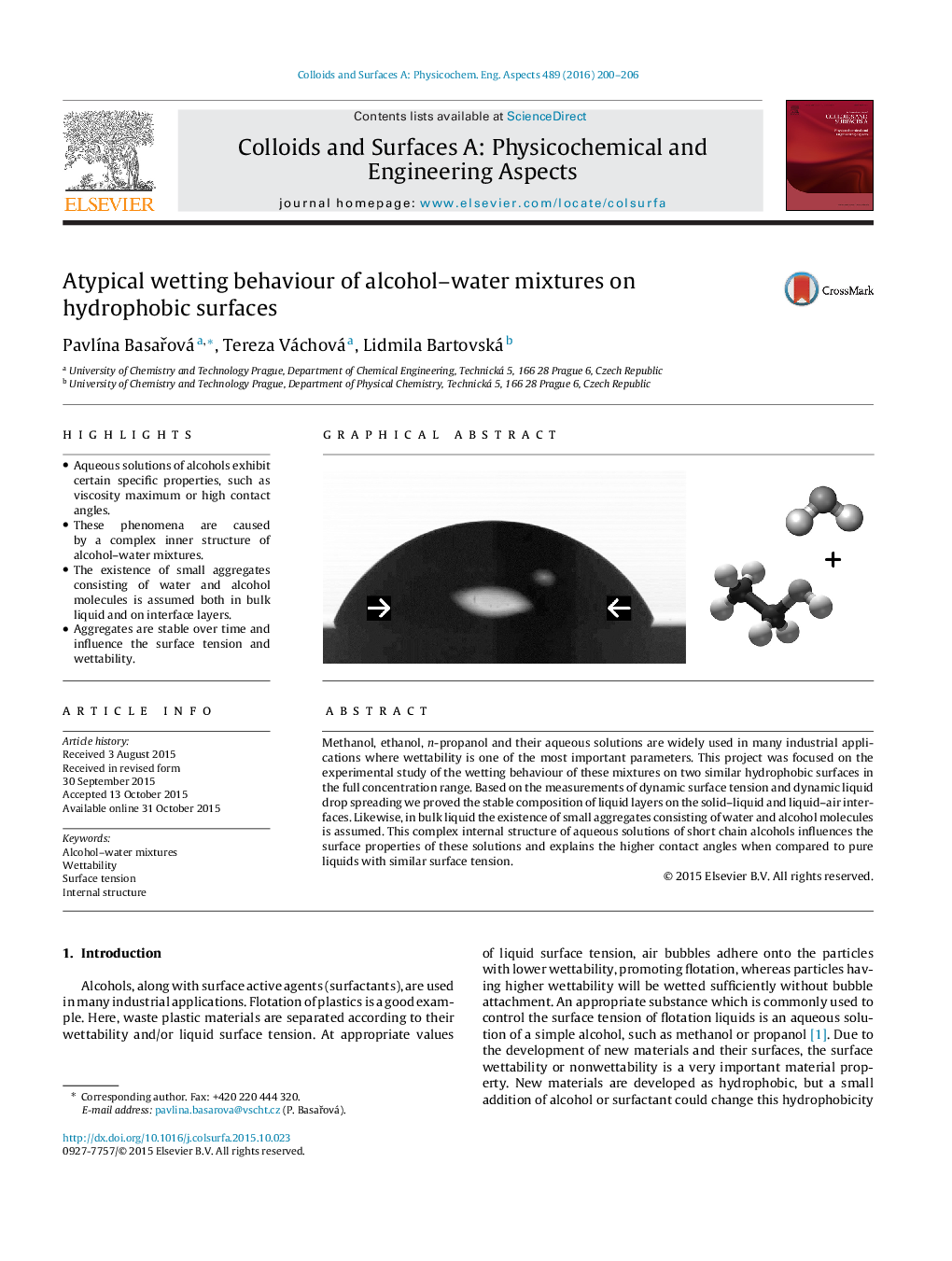| Article ID | Journal | Published Year | Pages | File Type |
|---|---|---|---|---|
| 591884 | Colloids and Surfaces A: Physicochemical and Engineering Aspects | 2016 | 7 Pages |
•Aqueous solutions of alcohols exhibit certain specific properties, such as viscosity maximum or high contact angles.•These phenomena are caused by a complex inner structure of alcohol–water mixtures.•The existence of small aggregates consisting of water and alcohol molecules is assumed both in bulk liquid and on interface layers.•Aggregates are stable over time and influence the surface tension and wettability.
Methanol, ethanol, n-propanol and their aqueous solutions are widely used in many industrial applications where wettability is one of the most important parameters. This project was focused on the experimental study of the wetting behaviour of these mixtures on two similar hydrophobic surfaces in the full concentration range. Based on the measurements of dynamic surface tension and dynamic liquid drop spreading we proved the stable composition of liquid layers on the solid–liquid and liquid–air interfaces. Likewise, in bulk liquid the existence of small aggregates consisting of water and alcohol molecules is assumed. This complex internal structure of aqueous solutions of short chain alcohols influences the surface properties of these solutions and explains the higher contact angles when compared to pure liquids with similar surface tension.
Graphical abstractFigure optionsDownload full-size imageDownload as PowerPoint slide
